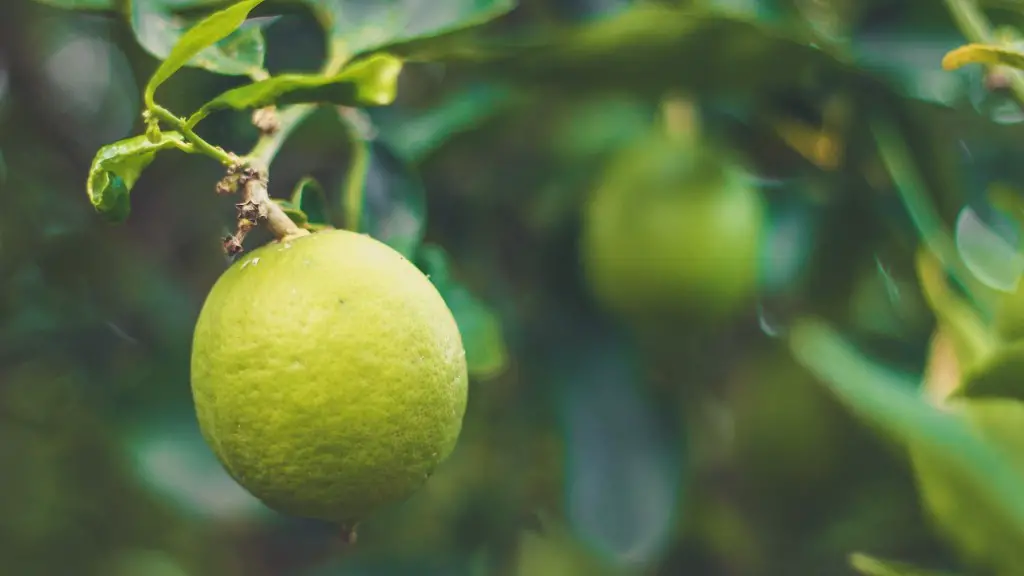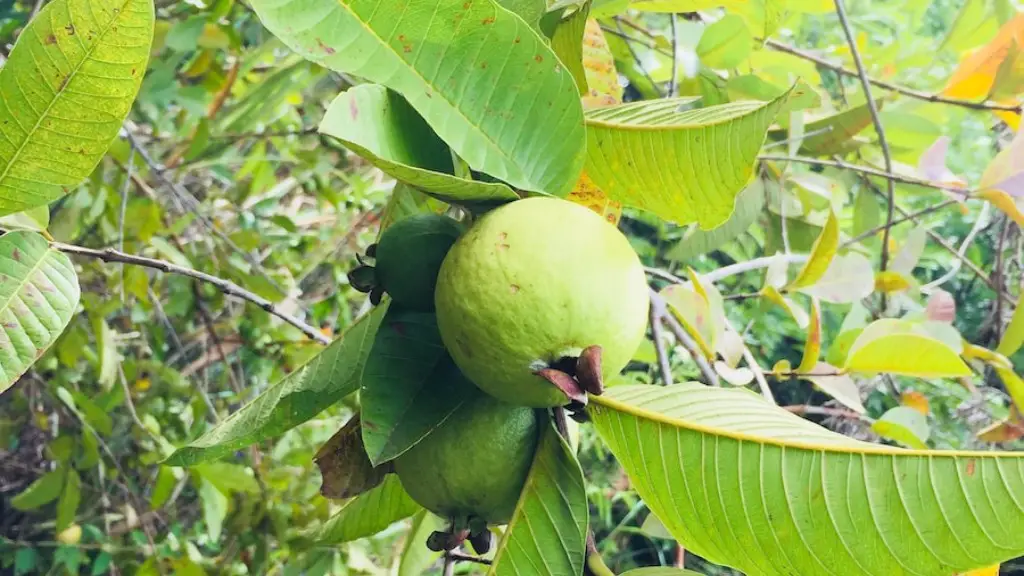When it comes to taking care of your Meyer Lemon Tree, it’s important to water it correctly. If you don’t water it regularly, the tree won’t get the hydration it needs and you won’t get delicious lemons to enjoy. But if you water it too often, your tree’s health will suffer. How often should you be watering? Let’s take a look.
The key to properly watering Meyer Lemon Trees is to understand how much water they need and how often that water should be applied. The amount of water needed can vary depending on the size of the tree and the climate in which it’s planted. Generally speaking, Meyer Lemon Trees should typically receive about one to two inches of water each week.
It’s important to note that the frequency of watering is just as important as the amount. During periods of excessive heat and prolonged dryness, Meyer Lemon Trees should be watered more often. During cooler, wetter times, you may be able to cut back on the frequency. It’s also important to monitor your plant’s soil for moisture. When the top inch of soil is dry, it’s time to give your tree some water.
If you’re not sure how often to water, you can use the “fingertip test” to check the moisture level of your tree’s soil. Simply put your finger into the soil around the tree’s root zone and hold it there for a few seconds. If you feel moisture, you can wait a few days before watering. If you don’t feel moisture, your tree needs water.
When watering Meyer Lemon Trees, it’s important to ensure that you’re using deep, long doses. This encourages the roots of the tree to expand deeper into the ground. It’s also important to allow all of the water you apply to absorb into the soil before you apply more. Overwatering is one of the most common mistakes made when caring for lemon trees.
Finally, it’s important to remember that proper water management is essential for Meyer Lemon Trees. Watering too often can lead to root rot, which can be deadly for the tree. It’s also important to take into account other factors associated with watering and caring for citrus trees, such as fertilization, mulching, and pest management.
Where to Water
The best place to water your Meyer Lemon Tree is around the base of the trunk. It’s important to avoid spraying or getting water on the foliage of the tree, as this can lead to disease or fungus. Additionally, it’s not necessary to water the stems or branches of the tree, as this won’t get the water to the roots where it needs to go.
When watering your Meyer Lemon Tree, it’s also important to make sure that you’re reaching the entire root zone, and not just the surface soil. You may need to use a shovel or spade in order to reach deeper into the ground and saturate the entire root zone.
Finally, it’s important to know how much water you’re applying. You may need to use a rain or hose-end gauge to make sure that you’re applying enough water and at the right frequency. The gauge will tell you how much water you’re applying, so you can easily adjust your watering schedule accordingly.
Frequency of Watering
How often you should water your Meyer Lemon Tree will depend on a variety of factors, such as the size of the tree, the climate, and the weather. Generally speaking, Meyer Lemon Trees should typically receive about one to two inches of water each week.
It’s important to monitor your tree’s soil for moisture. When the top inch of soil is dry, it’s time to water your tree. Additionally, during periods of excessive heat and prolonged dryness, Meyer Lemon Trees should be watered more often. During cooler, wetter times, you may be able to cut back on the frequency.
If you’re not sure how much water to give your tree or how often you should water, you can use the “fingertip test.” Simply put your finger into the soil around the tree’s root zone and hold it there for a few seconds. If you feel moisture, you can wait a few days before you water your tree. If you don’t feel moisture, it’s time to give your tree some water.
Finally, it’s important to remember that while frequent watering isn’t necessary, it’s important to make sure the tree is well-hydrated during periods of extended dryness or heat. Regular check-ins of the soil and adjusting of your watering schedule accordingly will help ensure that your Meyer Lemon Tree gets all the water it needs.
Use of Mulch
Using mulch is an effective way to help your Meyer Lemon Tree retain moisture in the soil. Mulch, such as organic matter such as compost, pine needles, and straw, helps slow down the evaporation of water from the soil and helps it absorb into the ground more quickly.
Applying mulch around the root zone of your Meyer Lemon Tree not only helps the tree retain moisture and nutrients, but also helps keep weeds at bay. Additionally, mulching your tree also helps prevent soil-borne diseases, such as Pythium root rot, which can be fatal for citrus trees.
When mulching your Meyer Lemon Tree, it’s important to make sure not to apply the mulch too close to the trunk. If you do, it can create an ideal environment for insects and fungal diseases. Additionally, the mulch shouldn’t be too deep, as this can block water from getting to the root zone.
Finally, it’s important to monitor the mulch frequently and make sure it’s not getting too dry. As the mulch dries out, it loses its ability to trap moisture, and your tree won’t get the benefit of the mulch. If the mulch does get dry, dig it out and replace it with fresh mulch.
Soil Quality
It’s crucial to have high-quality soil when growing your Meyer Lemon Tree. While it’s important to provide the tree with regular water, if the soil quality isn’t good, it won’t be able to retain the water for a long period of time. Low-quality soil can also become waterlogged and lead to root rot or other soil-borne diseases.
When preparing the soil for your Meyer Lemon Tree, you should add a layer of organic compost or mulch to help improve the soil quality. Additionally, you can add fertilizers such as fish emulsion or compost tea. These fertilizers will ensure that your tree has all the nutrients it needs to grow and thrive.
It’s also important to test the pH of your soil before planting a Meyer Lemon Tree. The ideal pH range for Meyer Lemon Trees is 6.5-7.5. If the pH of your soil is too low, you can add lime to the soil to raise the pH. If the pH is too high, you can add sulfur to bring it back down.
Finally, it’s important to remember to check the soil regularly to ensure that it’s in the ideal range. If the soil is too acidic or too alkaline, your Meyer Lemon Tree won’t be able to absorb the essential nutrients it needs to remain healthy.
Proper Pruning Techniques
Pruning your Meyer Lemon Tree is important for its health and for encouraging strong growth. Pruning should be done after the growing season, typically in the early fall. Pruning should be done before the tree starts to produce fruit, as the tree will need to be able to put its energy into producing fruit rather than growing more branches.
When pruning your Meyer Lemon Tree, it’s important to make sure that you’re only removing dead, damaged, or diseased branches. Removing too much will leave the tree weak and unable to produce fruit. Additionally, it’s important to use the proper pruning tools and techniques. Pruning shears, loppers, and pruning saws are all essential tools for pruning the tree correctly.
It’s also important to prune any overly long branches that are heavy with fruit. These heavy branches can easily break under the weight of the fruit, so it’s important to prune them back to maintain the tree’s stability.
Finally, it’s important to remember that proper pruning techniques are essential for the health of your Meyer Lemon Tree. Pruning is an important part of encouraging healthy, strong growth, and it can help prevent diseases and other pests from taking hold.



